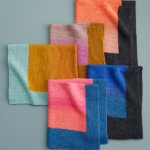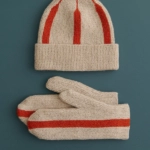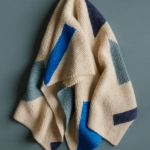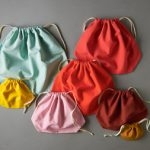How To Hand Wash A Sweater
Hand washing sweaters and other knits may be super easy, but that doesn’t mean you know how to do it! Here, we dispel the mysteries with step-by-steps, tips, do’s and do not’s.
Your first question may be, why hand wash? The simple answer is to avoid felting. In the presence of water, many knits will felt if they are agitated, tumbled, tousled, rubbed, or otherwise treated roughly. Hand washing avoids this pitfall and also gives you more control to avoid other common washing-machine mishaps: shrinkage, misshaping, snags, and what-not. Note that lots of modern machines have gentle cycles designed to mimic the care of actual hand washing. If you want to go that route, we recommend testing the cycle with your gauge swatch before you go ahead with the actual finished piece.
In the end, we tend to stick with hand washing. It seems to us the safest way to treat the things we care about. Plus, we welcome any opportunity to commune with fiber!
Rather read? Here’s the same information that’s in our video written out…
Materials
- In this tutorial, we use Purl Soho’s rinse-free Sweater Soap, a very gentle, kind-to-your-fibers soap, made of plant-based saponified oils. Learn more here: https://www.purlsoho.com/sweater-soap.html
- A basin or sink (large enough to hold the piece you are washing)
- A tablespoon (or your best guess-t-imation)
- 2 clean towels (if you are washing a large piece you may need more)
Wash
- Fill a basin or sink with enough tepid water to completely submerge your sweater.
- Add soap and swirl until the soap is completely dissolved. For our Sweater Soap we recommend using approximately 1 tablespoon of soap for every gallon of water. This ratio does not need to be exact, just be sure that the water does not feel too soapy.
- Place the sweater in the basin, pushing it down into the water until it is fully submerged.
- Let the sweater sit for at least 15 minutes in order to completely absorb the water. For chunky or particularly dirty pieces, allow them to soak for longer.
- Drain the basin or sink. If your piece still seems dirty or if you didn’t use rinse-free soap, refill the basin with tepid water, this time without soap. Be sure not to pour the water directly onto your knit (even that amount of agitation can cause felting!). Soak the piece again. You can repeat this step as many times as necessary.
- Carefully fold the sweater into a bundle and gently squeeze out excess water. Be careful not to twist, wring, stretch, pinch, or pull the sweater in order to avoid felting and misshaping.
Dry
- Lay a clean dry towel out on a flat surface.
- Being careful to keep the sweater in its bundle as you transport it, lay the sweater flat on top of the towel.
- Roll the sweater in the towel.
- Add weight to the roll so the towel can absorb the excess water in the sweater. You can apply firm pressure here (walking or kneeling on the roll works!), but still be careful not to twist or wring the rolled up towel and sweater.
- Unroll the towel and sweater.
- Lay out another clean, dry towel, making sure there are no bumps or creases in the towel.
- Gently transfer the sweater to the dry towel and lay it out flat. Carefully shape the sweater so it looks tidy and is the size and shape you want it to be.
- Let the sweater air dry completely. Depending on the thickness of your knit and the weather, this can take quite a long time. Try to leave it alone so your knit can maintain its shape while it dries.
- You did it! Your hand knit is now clean and fresh and may even feel like it’s got a bit of a new life. Best of all, you never have to be afraid of hand washing again!









What if you have a lot of hand knits to wash? Can you place more than one knit garment in the basin to soak or is it better to make a fresh bucket for each piece?
Hi Carrie,
Great question! If you have washed the sweaters before and are sure the colors won’t run, or if the colors are very similar, then you can absolutely wash several sweaters at one time! You do want to make sure your basin or tub is large enough to fit all of the sweaters comfortably, and wrap each one individually in towels to squeeze out the excess water, but otherwise, this is a great way to save time when washing multiple garments!
Best,
Julianna
I have a beautiful, cashmere sweater that has been hand washed, and I believe it “felted” a bit. Is it possible to re-wash it (by hand) and block it to its original size?
Hi Marybeth,
Thanks for writing in! It really depends how much the sweater has felted or shrunk. Under normal circumstances it is possible to aggressively stretch a sweater or other knitted item while it is wet to make it larger, but if the yarn has felted, it will resist being stretched because the fibers are stuck together. However, if it is only slightly felted, you should be able to stretch it out at least a little bit, so it’s certainly worth a try! Just be sure to handle it gently while it is in the water to avoid any further shrinkage!
I hope that helps!
Julianna
Hi,
Will this soap also work for Silks and Linen blends?
Thanks!
Hi Ann,
Thanks for reaching out! Yes, our Sweater Soap is perfect for all hand knits, including silk and linen yarns, and any other delicates!
Best,
Julianna
Hi!
That’s a beautiful sweater! Is that a Purl Soho pattern?
Thank you!
Hi Marie-Claude,
Thanks for writing in! Yes, it is! Laura is washing our Bobble Yoke Sweater!
Best,
Julianna
Hello, I just finished a baby blanket, so would I be able to follow the same steps as these instructions for my blanket (because the tutorial example uses a sweater)?
Hi Dee,
Thanks for reaching out! You can definitely follow these same instructions for hand washing your baby blanket!
Please let me know if you have any more questions!
Gianna
I’ve experienced a couple of projects’ yarn lose its loft and squish after washing/blocking. How do I prevent this? I love them before they get washed, and then….
Hi Donna,
I’d recommend giving some other blocking techniques a try if you’re finding that a yarn isn’t responding well to wet blocking! One option would be steam blocking. When you’re beginning a new project, I’d suggest trying out different blocking methods on your swatch beforehand. That way, you can see which one would be best for whatever yarn you’re using!
All the best,
Lili
Thank you. Is there a way to get the yarn’s bounce back? I experienced this with the DREAMY Posy yarn in the Herringbone mittens and I’d love to get the fluff back 😢 (going to make a second pair in different colors, which will get steam blocked or not blocked for sure). Thank you!!
You’re very welcome, Donna! I think that just wearing the mittens around a bit will help bring the fluff back. The stitches may just need to adjust and settle into their natural positions, and allowing the fabric to move about should bring it to life a bit more.
All the best,
Lili
Hi! This is my first time hearing about no-rinse soaps, and I am wondering how the garment gets clean if I am not rinsing anything out? What is the benefit to this method? Thank you.
Hi Nicole,
Thank you for writing in, that is such a great question! Our Sweater Soap was created specifically for the sensitive nature of knitted garments and their tendency to felt with agitation. Eliminating the rinse step also means less risk of accidental damage to your pieces. Since our soaps are designed to dilute in water, this also means you won’t notice the trace amount of soap that remains on the garment because it is such a gentle, delicate, natural, plant-based soap.
We recommend checking out our How to Hand Wash a Sweater video to see this process in action. Please let us know if there is anything else we could answer for you and we would be happy to do so.
Happy making,
Gavriella